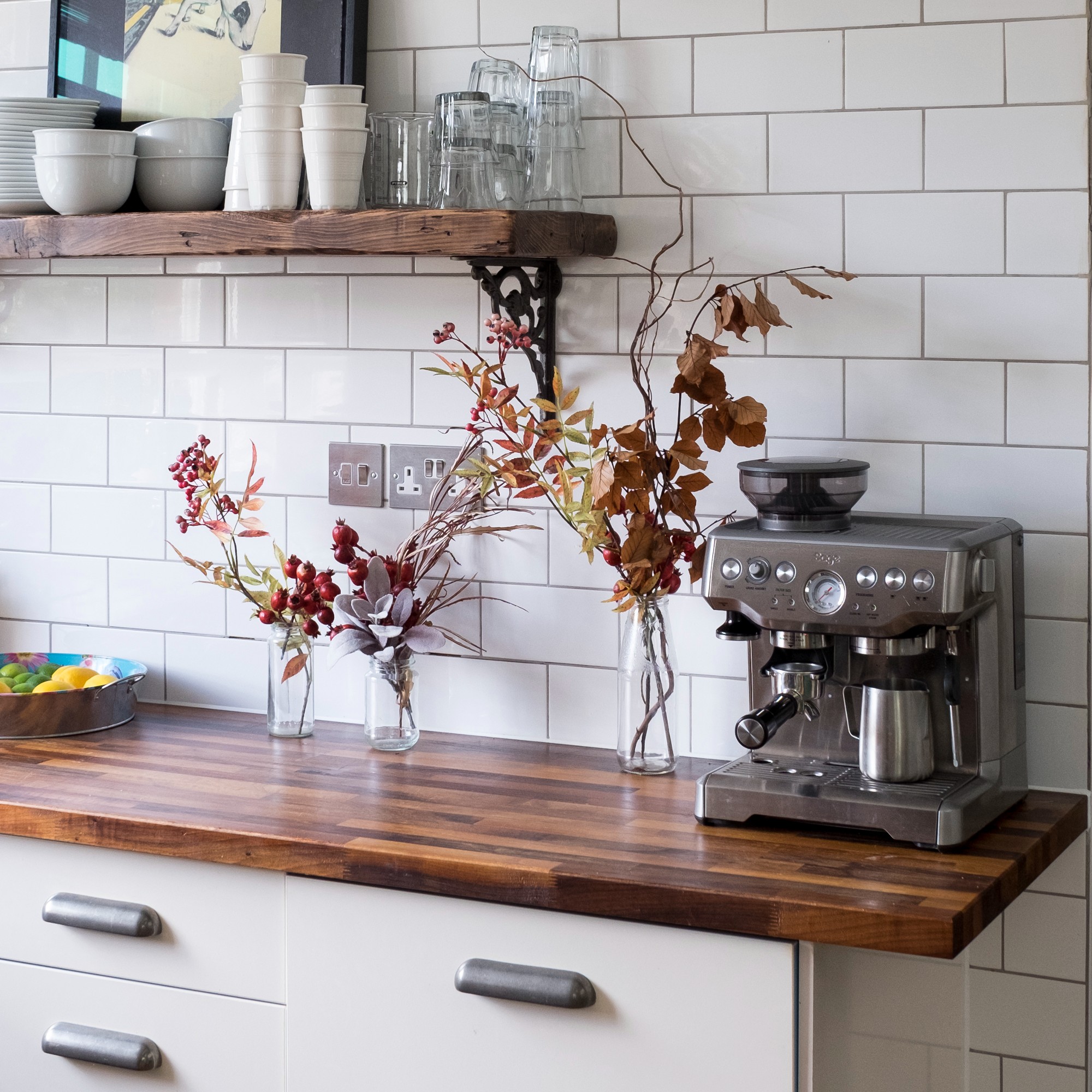
It might not seem like a fair fight, pitting an entry-level manual espresso machine against a mid-range all-in-one marvel at more than twice the price, but the Sage Bambino vs Sage Barista Express Impress prize fight is a far closer fought battle than you might expect.
In fact, it’s a devilishly tricky buying decision: do you pair Sage’s £329 Bambino with a top-quality coffee grinder, or is the £729 Barista Express Impress with its built-in grinder and coffee-optimising features what you need to take your coffee to the next level? Both machines can make amazing coffee, but the burning question is which is best for you – or indeed whether you’d be better off buying one of the best bean to cup coffee machines instead.
I’ve tested many of Sage’s espresso machines over the years in my at-home test kitchen, so in this article, I’ll help you answer all of those key questions, explain all the pros and cons of both machines and – most importantly – help you decide which one is the best coffee machine for your kitchen.
A gorgeously compact machine that’s capable of making great coffee, but a good grinder to go with it is a must.
Our Sage Bambino review has the full details.
The built-in-grinder and coffee-crafting guidance make for a sublimely elegant all-in-one espresso machine.
Our Sage Barista Express Impress review has the full details.
Sage Bambino vs Sage Express Impress - size
Before we get into the nitty gritty of features, ease of use and coffee quality, there’s one simple question to answer: do you actually have enough room in your kitchen for the Barista Express Impress?
As the Barista Express Impress is an all-in-one design with a built-in grinder, it takes up much more room on your kitchen worktop than a standard manual espresso machine. It measures 33cm wide by 38cm deep by 41cm tall, and you’ll need to leave a little breathing room around it so that you can easily remove and refill its water tank at the rear, and also so that you can refill the beans hopper on top without spilling beans everywhere.
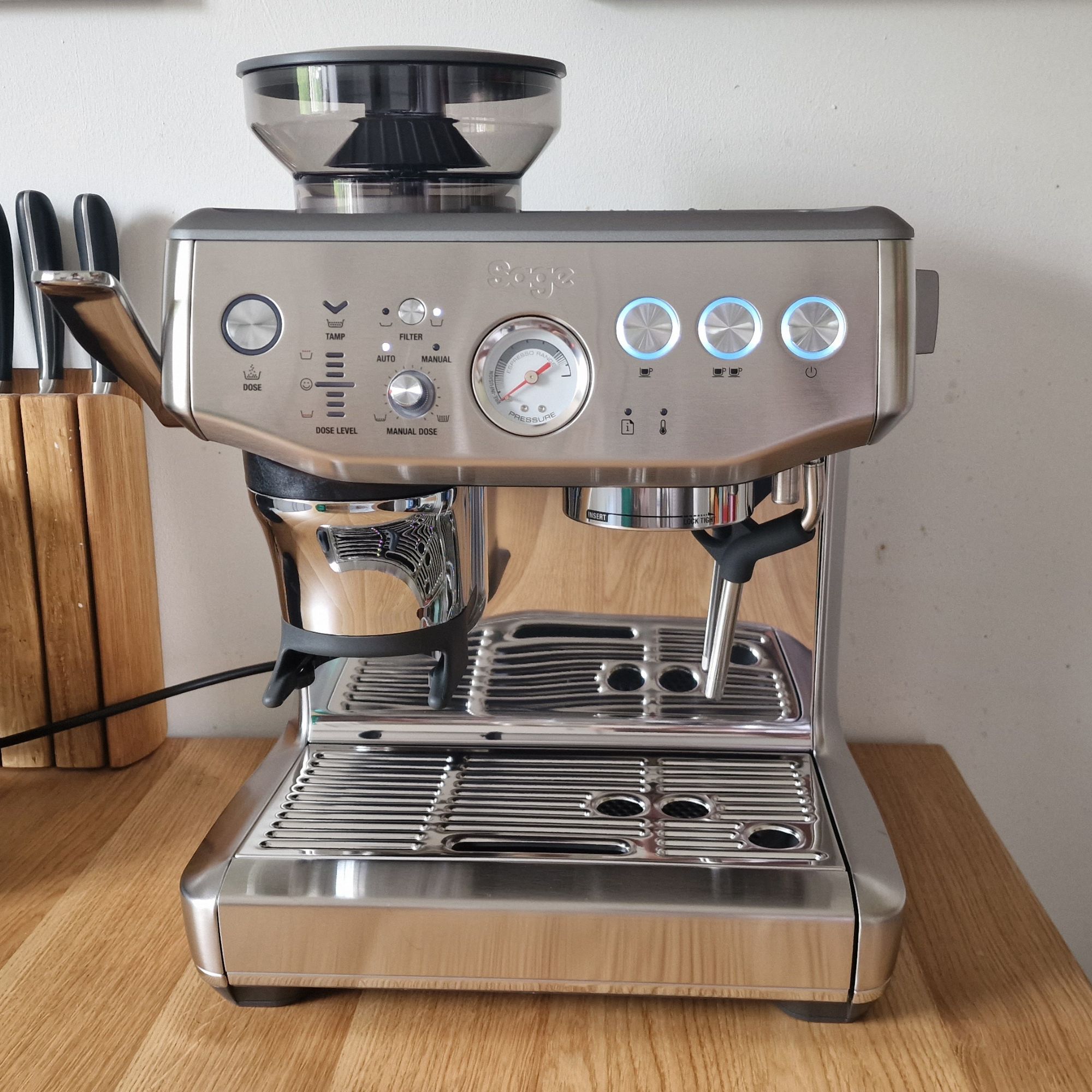
By contrast, the Sage Bambino measures a dainty 19.5 cm wide by 32cm deep, and as it doesn’t have a bean hopper protruding from the top, it’s only 31cm tall.
You’ll need to factor in the space needed for a separate coffee grinder, but all but the biggest professional grinders will be smaller than the machine itself. The water tank is still at the rear, too, so bear in mind that you’ll want to leave a little wiggle room for unclipping that and popping it back into place.
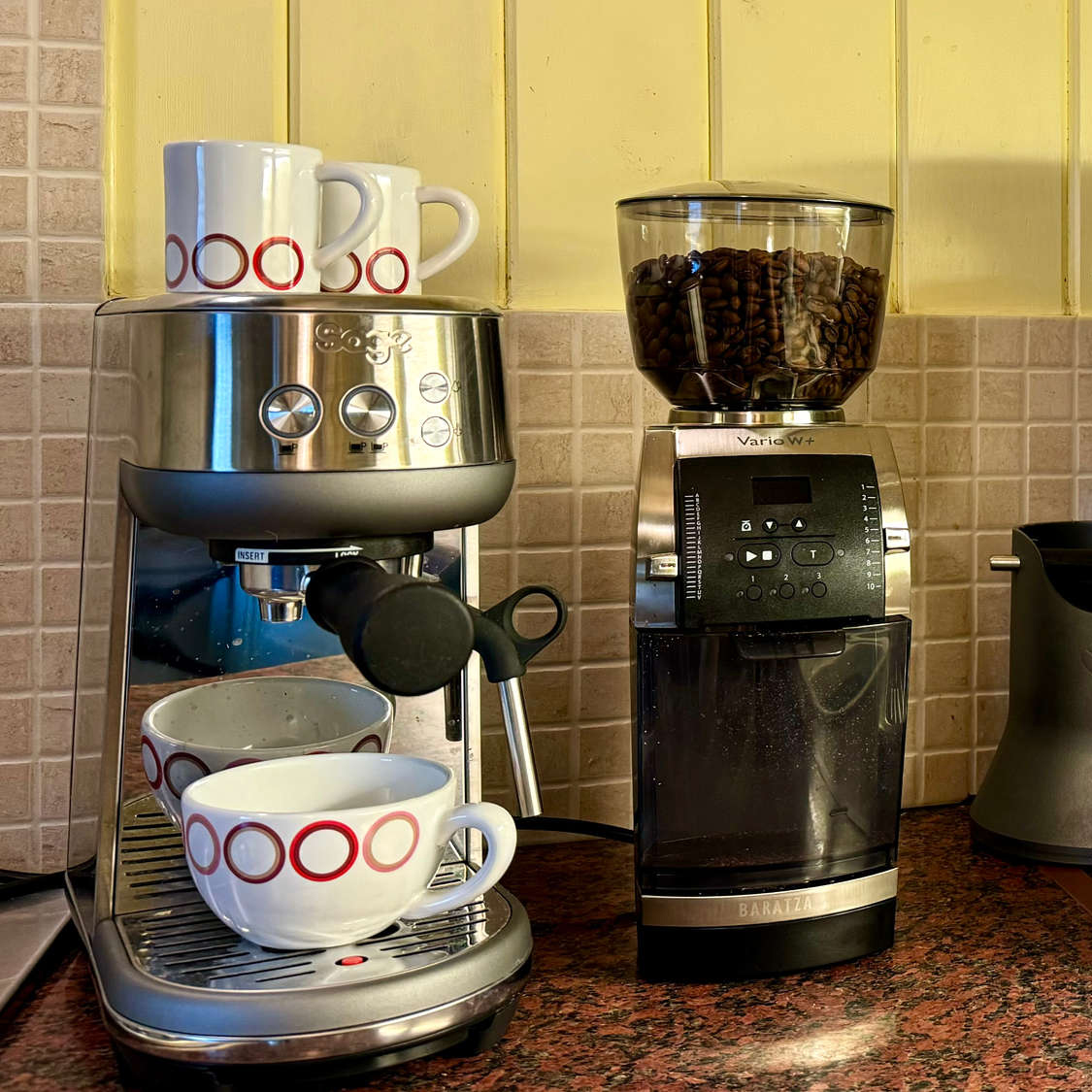
If you’re really short on space (and your arm muscles are up to it), you could pair it with a tiny, good quality hand grinder, which you could stash in a drawer. Or naturally, you could just use a mains-powered coffee grinder and pop it back in a cupboard when you’re not using it. For smaller kitchens, it’s an easy win for the Bambino.
Sage Bambino vs Sage Express Impress - Price
On paper, it looks terribly unfair to compare the £329 Bambino against the £729 Barista Express Impress, but it’s not a complete mismatch.
For starters, you’ll need to add the price of a good quality grinder to the Bambino’s price, and while you can get genuinely brilliant hand grinders (such as the KINGrinder K6 for a little under £100 from Amazon), you’ll need to spend nearer £200 to get a good mains-powered grinder. I’d personally recommend something like the Baratza Encore ESP (the ESP stands for, you guessed it, espresso) at £173.99 from Amazon, a grinder that would make for a very capable £500 pairing with the Bambino.
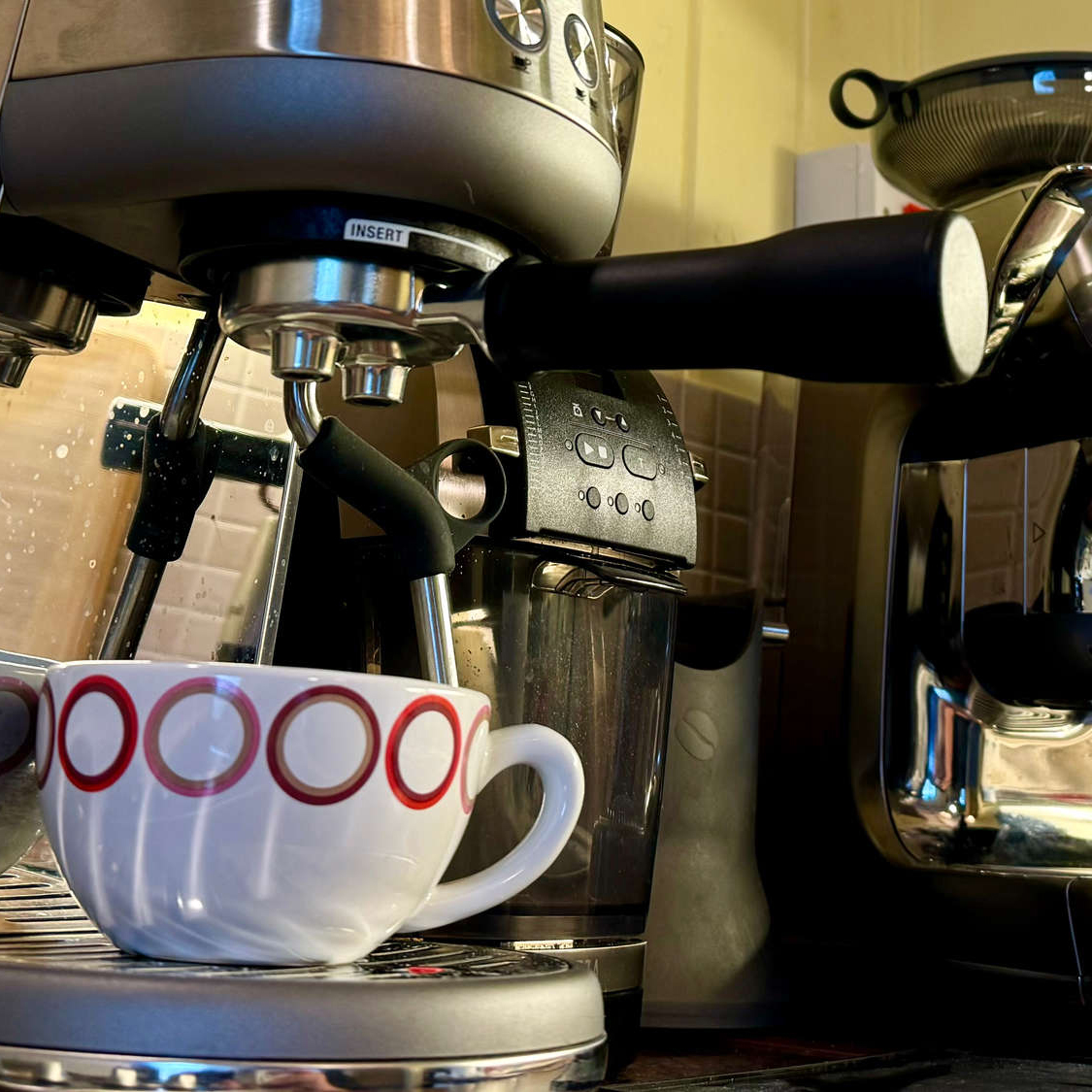
Devil’s advocate: You could forgo the grinder completely and buy supermarket pre-ground coffee instead, but it’s not something I’d recommend as it won’t be ground fine enough to brew proper espresso. Equally, you could buy a cheap £50 coffee grinder, but again you’ll be very limited in the quality of the shots you’ll be able to pour, as cheaper grinders struggle to produce evenly ground coffee, which impairs the flavour.
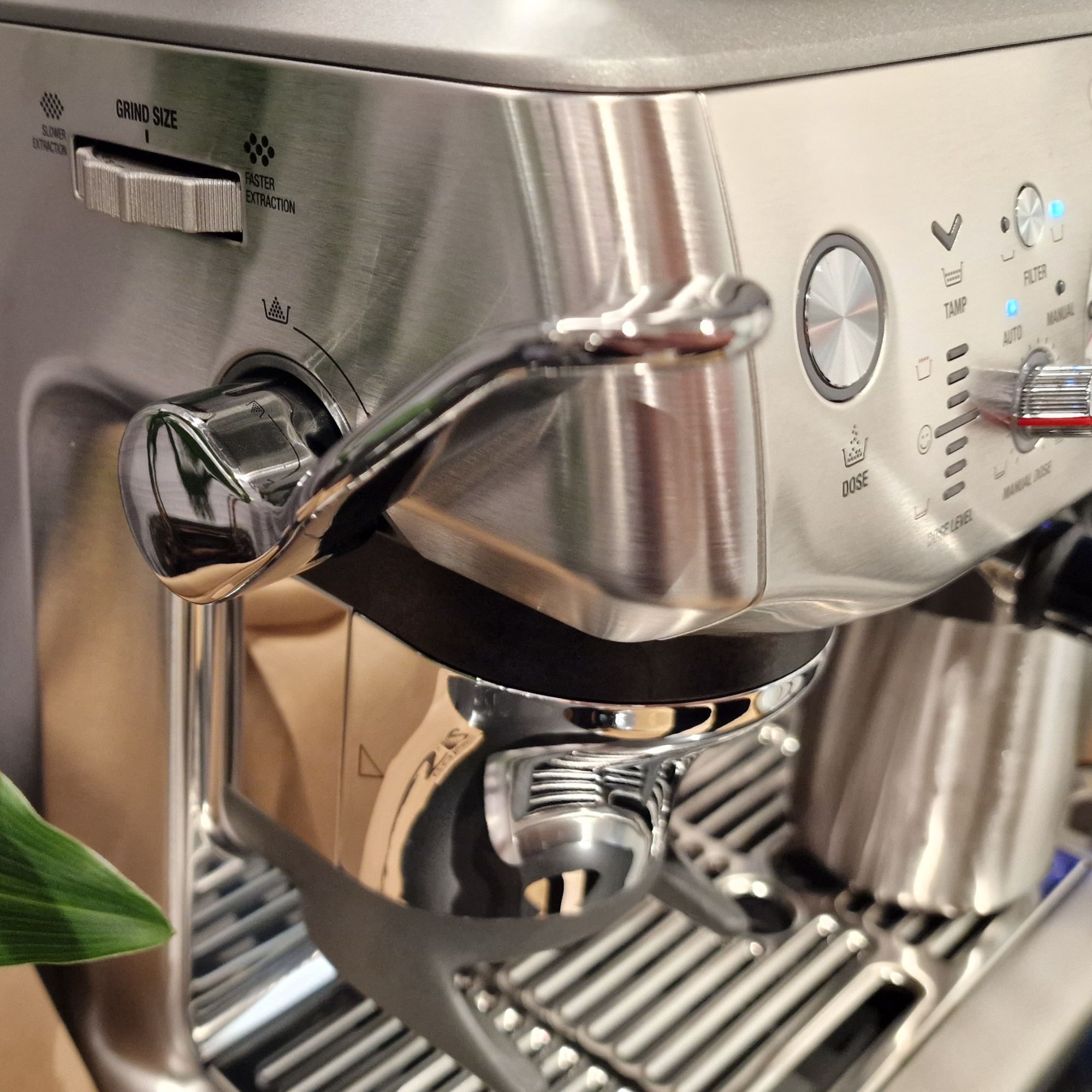
One thing you won’t be able to replicate with the Bambino, however, is the Barista Express Impress’ automatic dosing and tamping features (which I’ll explain in a little more detail in the Ease of Use section below). If those kinds of assistance features – and indeed the neatness of the all-in-one design – really appeal to you, then the Sage Barista Express Impress’ £729 RRP is by no means unreasonable.
Sage Bambino vs Sage Express Impress - Ease of use
Let’s get one thing straight: manual espresso is a bit of a faff. It’s the method of choice if you want life-changingly good coffee, but true barista-class brilliance isn’t a walk in the park. If you want to press a button and watch a decent (if not brilliant) coffee pour into a cup, then the question of whether a bean-to-cup coffee machine is worth it comes with the answer of a resounding yes.
The Sage Bambino’s appeal is its relative simplicity: it’s an espresso machine stripped down to its bare essentials. There are just three buttons on the front: one for a single shot, one for a longer double shot and one to activate the steam wand for heating and frothing milk.
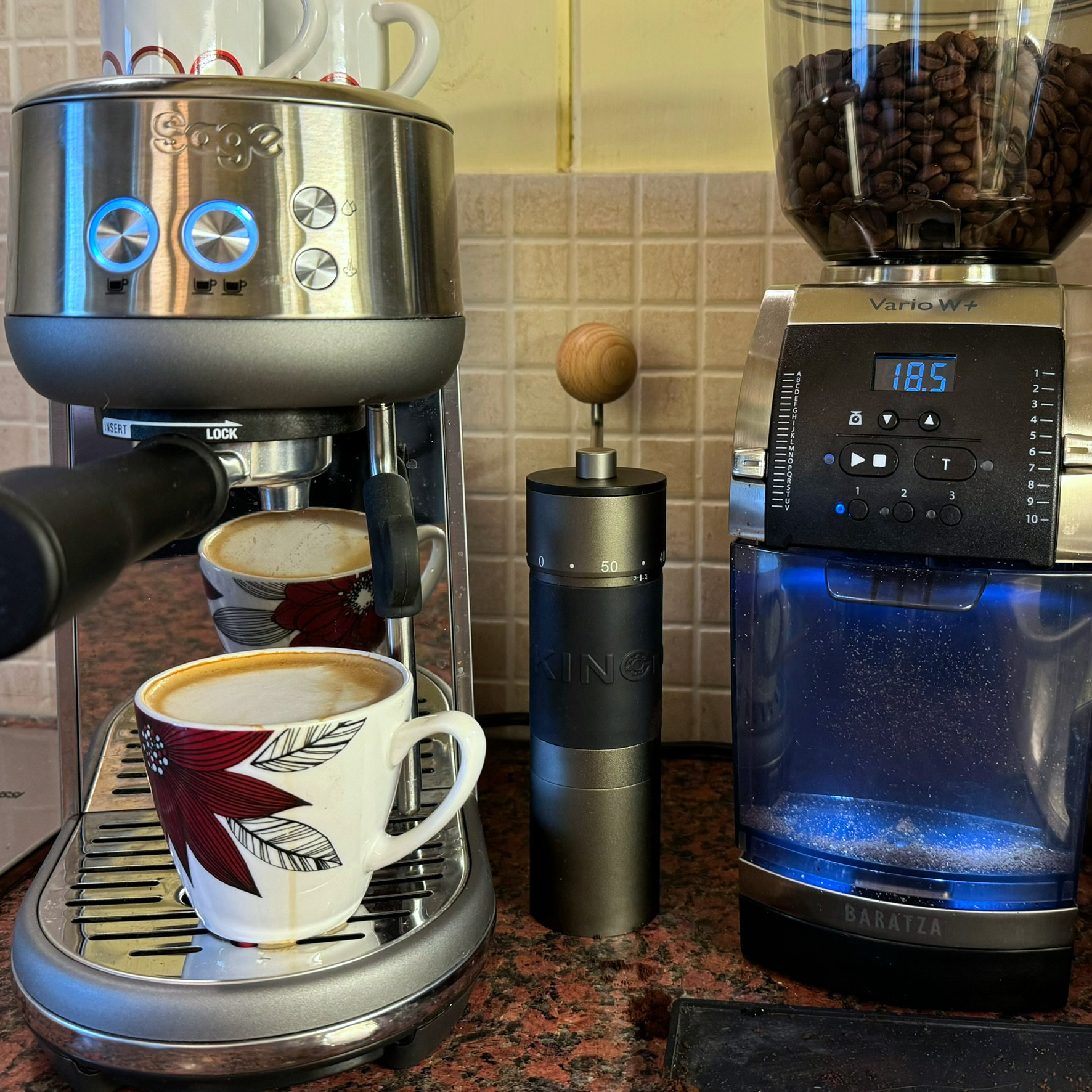
The Bambino doesn’t have the automatic milk frothing features found on some of Sage’s pricier machines (the Bambino Plus, for instance), so you’ll need to get the hang of that yourself, but it’s still a great little machine for beginners.
Sage’s brilliantly helpful instruction manual gives you tips and pointers as to how to make great coffee, and you can also watch the video tutorials on Sage’s website or sign up for Sage’s free masterclasses which give you live access to Sage’s trained baristas.
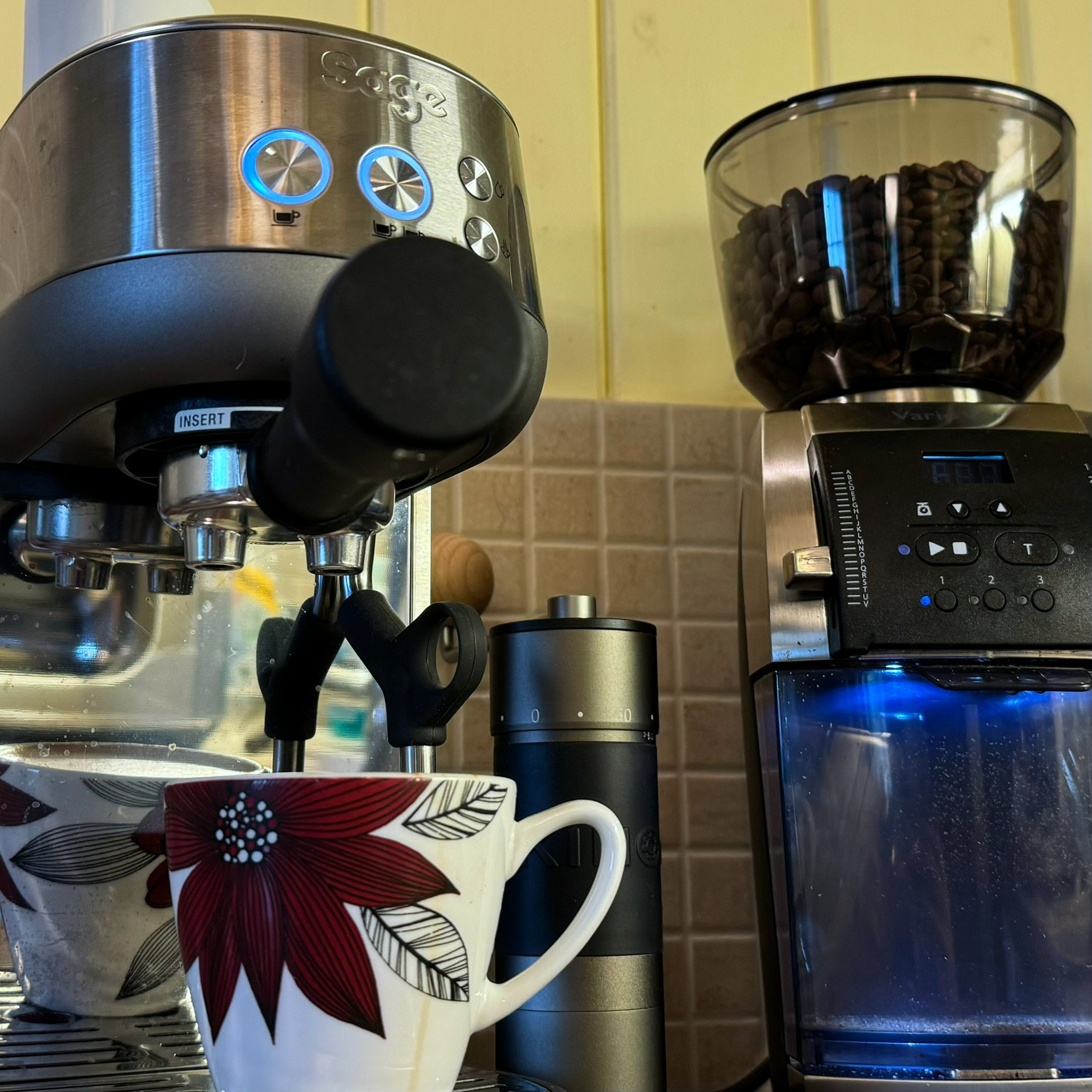
Step up to the Barista Express Impress, however, and the machine has a few key features which make it even easier to make great coffee. The Barista Express Impress’ built-in grinder is the big addition here as it has an intelligent dosing feature which detects when it has ground the right amount of coffee into the portafilter.
What’s more, it also has an assisted tamping feature which presses down the coffee puck with a consistent 10kg of force; something which can be tricky to replicate for beginners and enthusiasts alike.
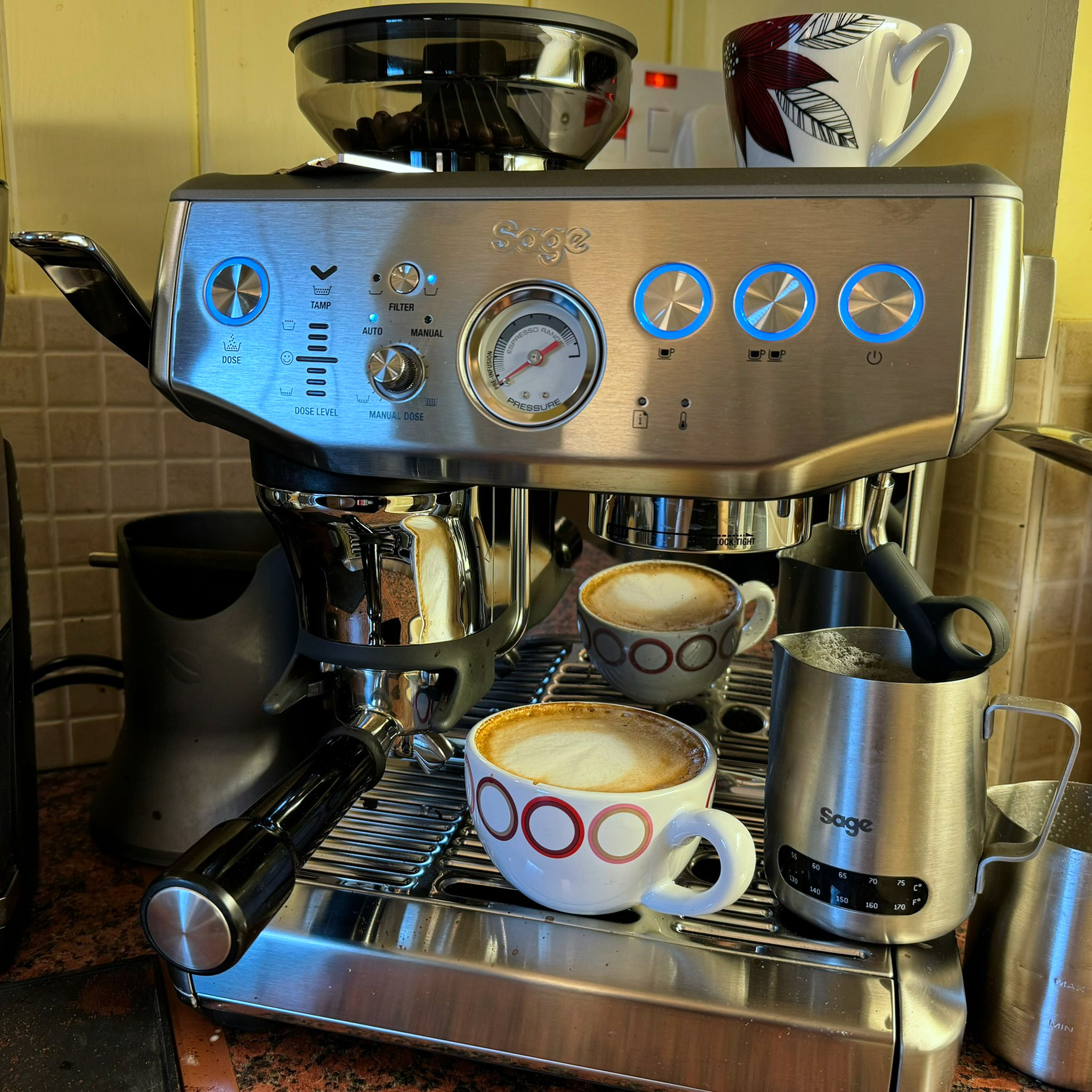
Other upgrades for the Barista Express Impress include a pressure gauge which shows you the current brew pressure and the ability to adjust the brew temperature to better suit different types of coffee. If you’re partial to lighter roasts, then being able to increase the brew temperature can improve the quality of your shots.
The pressure gauge is arguably less essential, however, as it’s not always a reliable indicator of shot quality – I’d always advise concentrating more on how long your shots take to pour, and their weight. As long as you’re aiming for a 1:2 ratio in around 30 seconds, you’re golden: put 18 grams of coffee in the portafilter, keep brewing until you have around double that weight of coffee in the cup, and aim for the shot to take around 30-40 seconds.
Sage Bambino vs Sage Express Impress - Coffee quality
This isn’t the easy win you’d expect for the Barista Express Impress. The limitation here is the quality of the grinder, and while the Barista Express Impress’ is just fine – and capable of brewing some very tasty coffee indeed – it’s not as good as dedicated aftermarket grinders.
I’ve tested the Bambino and the Barista Express Impress side by side, and you can turbocharge the Bambino with a suitably classy grinder. For instance, brew a few espressos with something relatively basic – I’ve got an old tired Krups GVX231 burr grinder (£59 at Amazon) which fits the bill – and the Barista Express Impress takes the lead. Shots are more consistent both in flavour and consistency, and it’s a clear step up on the Krups/Bambino combo.
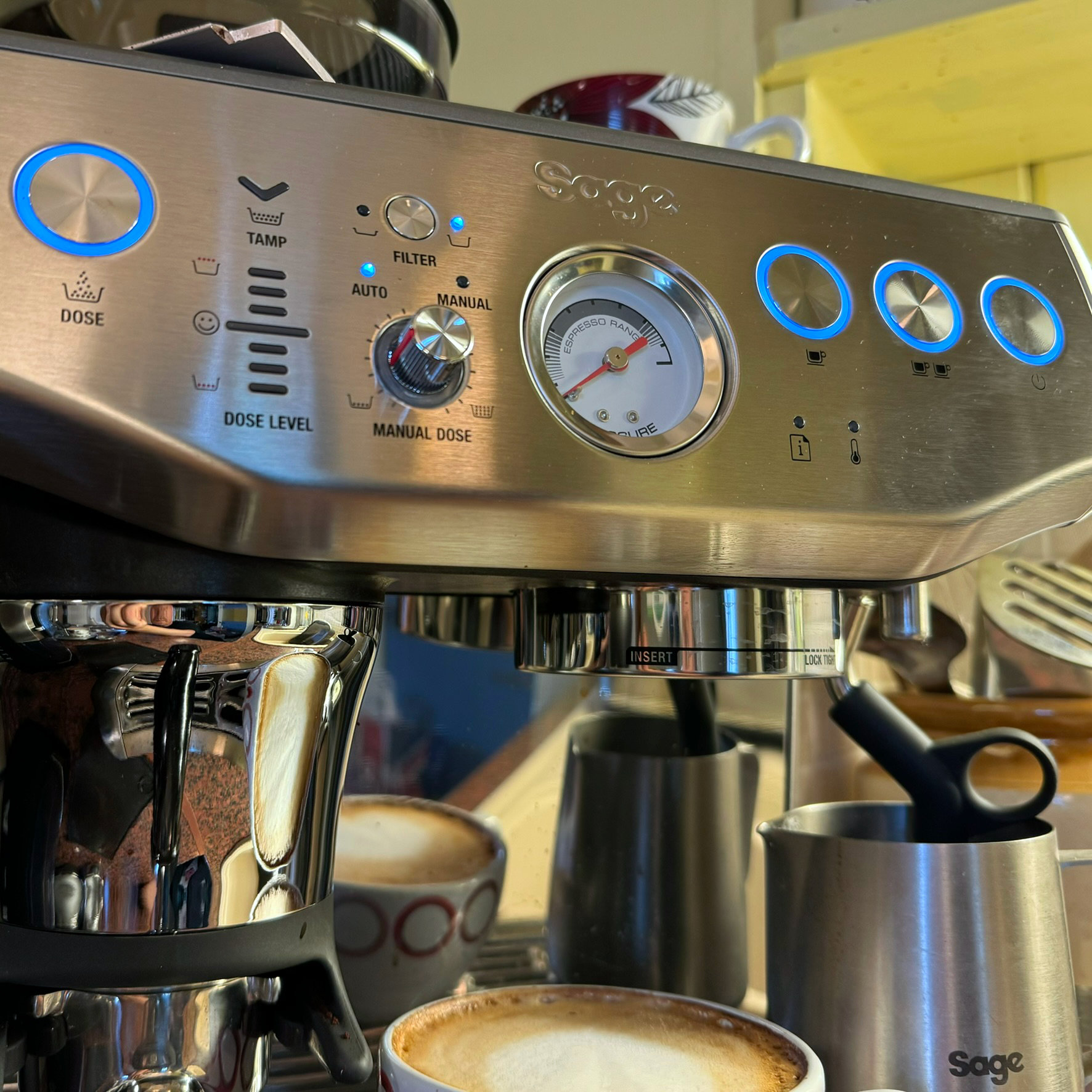
Pair the Bambino with something genuinely fancy, though, such as the Baratza Vario W+ (£419.95 from Amazon) and it punches well above its weight, producing shots with noticeably more depth and body than the Barista Express Impress can muster.
What’s more, the Baratza grinder – just like many aftermarket grinders – has greater fine adjustment than the 25 grind size settings found on the Barista Express Impress’s built-in grinder. I’ve often faced issues on Sage’s all-in-one machines with one grind setting being just a tad too fine or coarse, and – if you’re being picky, and I am – that extra level of fine adjustment can really help dial in the perfect espresso.
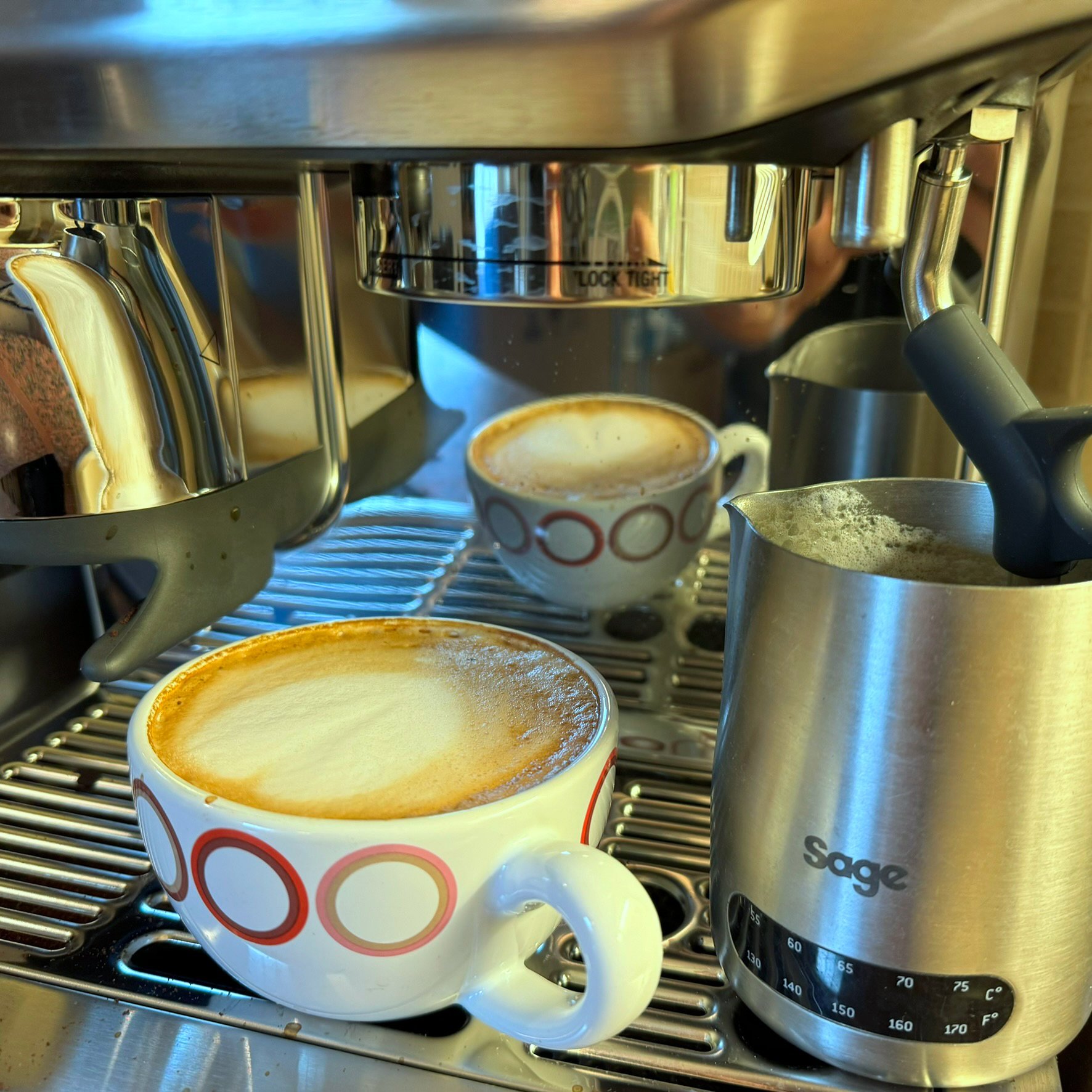
Partnering a £329 machine with a £400 grinder might sound like overkill, but the Sage Bambino (£329) and Baratza Vario W+ (£400) pairing are actually the same price as the Barista Express Impress at £729.
Now, granted, I wouldn’t push anyone to spend £400 on a grinder up front – that is excessive – but, if you’ve got the budget, partnering a really good quality grinder with an affordable espresso machine is actually a very sensible option.
Sage Bambino vs Sage Express Impress - Verdict
Whichever machine you choose, it’s worth reiterating: manual espresso machines are not one-button wonders. Compared to the best automatic bean-to-cup machines, which can brew up a fairly decent latte or cappuccino at the touch of a button, manual espresso machines are far more fiddly.
So why put the effort in? Simple. With even a tiny bit of practice, a basic manual espresso machine such as the Sage Bambino can make espresso, latte, cappuccinos and macchiatos which make coffees from £1,000+ bean-to-cup machines taste entirely underwhelming.
If you can afford to pay the premium up front, then there’s no question that the Sage Barista Express Impress is that bit easier for beginners to get to grips with. It helps you find the optimal dosage – which can be a huge and frustrating stumbling block for many buyers – and the automatic tamping removes a degree of guesswork which makes it far easier to brew the perfect coffee. The all-in-one design will appeal to many users, too, even if it might prove limiting further down the line when you decide you want to upgrade.
And on that front, there is much to love about the Bambino. Pair this little machine with a good-quality grinder, and it’ll brew the kind of coffee which will remind you why you’re a fan of the black stuff in the first place.
You can always opt for a cheaper grinder to begin with, upgrade to something a little more special in the future, and as your skills progress you won’t end up having to replace both. If you’re tempted to dip your taste buds into the world of proper espresso without spending a fortune up front, the Sage Bambino is capable of punching way above its weight.







